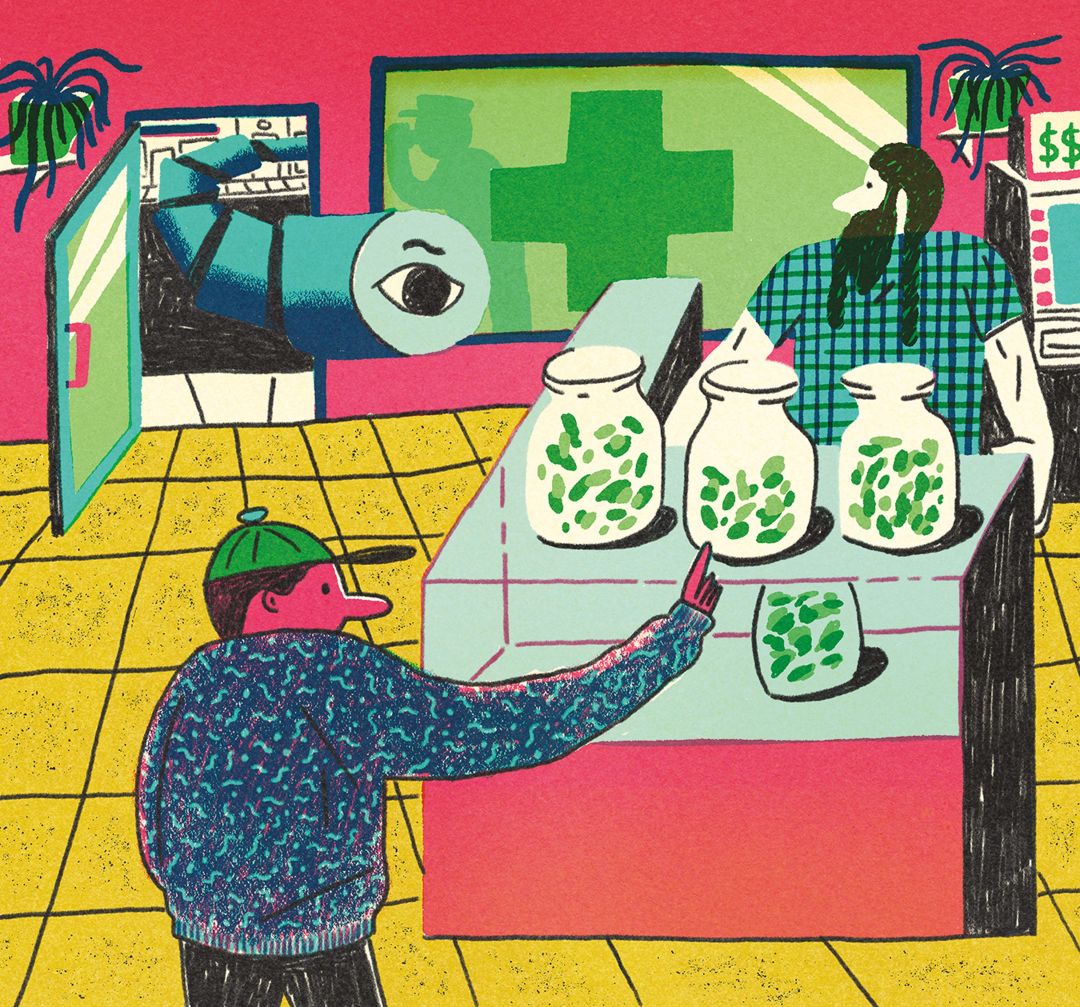How the OLCC Scrambled to Regulate Oregon's Cannabis Industry

Image: Vance Lump
The Oregon Liquor Control Commission, formed in 1933 with the repeal of alcohol prohibition, has long been in charge of regulating Oregon’s booze habit. But in 2015, the agency took on a new, greener mission: licensing, regulating, and enforcing the state’s spanking-new recreational marijuana laws. We asked OLCC spokesperson Mark Pettinger how the agency—with 59 people devoted to cannabis and a $19 million budget—handles it all.
When the floodgates opened on recreational marijuana, what was it like?
In January of 2016, the day we flipped the switch on the [recreational license] application process, there was a major ice and snowstorm that paralyzed Portland. I remember I fielded dozens of calls from people trying to apply and trying to navigate and get into the system. In many instances applicants were folks who hadn’t had a lot of experience with digital platforms, who hadn’t had emails before, or who had never interacted with a government agency.
Were you prepared for it?
There was certainly expertise the agency possessed because of the experience in licensing alcohol. But no, there weren’t a lot of guidebooks. Washington and Colorado at the time were the only two states that had preceded Oregon. We were able to develop some structures but really didn’t understand the popularity of entrepreneurs who wanted to enter this industry. The revenue, the supplier estimates, the licensing estimates were low—they were fairly conservative.
How did you handle that craziness?
The agency became more integrated. We utilized people from the alcohol [division] to help with the licensing process. So instead of having two standalone programs, we became more synchronized. There was also a point where we had to do some additional surge staffing. We got backed up pretty significantly with marijuana worker permits, so we deployed a whole bunch of staff from around the agency. So that, in some way, has become a guiding mantra: utilize any and all staff instead of wearing one hat.
Our agency is the third-largest generator of revenue for the state after the collection of taxes and the lottery. We deliver a significant amount of income, but we have some antiquated legacy systems that need to be modernized. I think most people who interact with our agency have a good experience. But a common concern—and a legitimate one—is the inability to always be able to get ahold of someone in a timely manner. And that’s because we just don’t have the staff. We’ve got a really tight building. It’s a very, um, familial setting.
How has cannabis regulation progressed since 2016?
When Prohibition [was lifted], it took a significant amount of time for the bootleggers, the rumrunners, and the speakeasies to be eliminated. It took time for the small breweries to conform to both federal law and state law. That’s also the reason why there’s a patchwork of alcohol laws around the country. With cannabis, we’re probably moving a lot faster than what happened with Prohibition. We’re in a different age. Cannabis entrepreneurs are very creative, and they push the boundaries—not necessarily because they’re trying to break the law, but they’re experimenting and trying to assess demand for different types of products.
Is there an area where Oregon is a pioneer?
Oregon’s packaging and labeling program has been heralded as a best practice. Instead of building the product, packaging it, and then sending it to us, you can get your packaging and labeling approved in advance, and then when your product is ready you can go [directly] to market. Other states, including Washington, have looked to it as a model.







